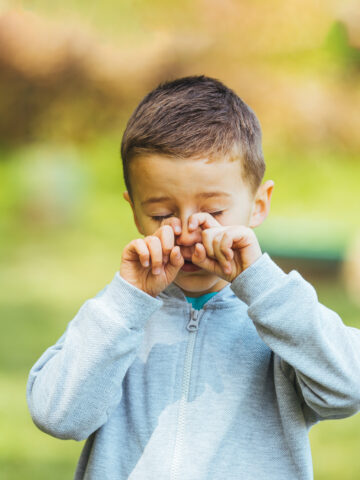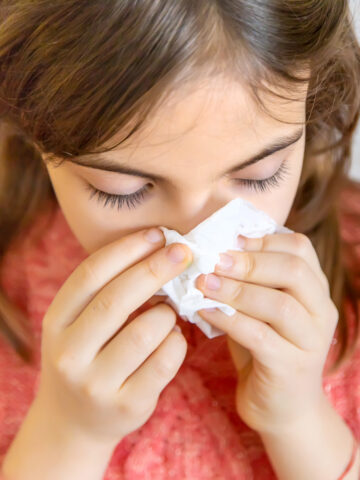As families spend more time outdoors during summer months, parents and other caregivers should be aware of the hazards related to bee stings, and how they can help prevent a child from being stung, a CHOC pediatric allergist says.
Bee stings can be quite common, and don’t usually lead to a serious reaction, says Dr. Wan-Yin Chan. However, there are several things parents can do to help prevent bee stings:
- Keep food and drink containers closed when outdoors.
- Wear shoes, socks and gloves when working outdoors.
- Hire an exterminator to remove hives and nests around your home.
- Avoid wearing brightly colored clothing or perfume.
- Remain calm and walk away if you spot stinging insects.
What to do if your child is stung by a bee
Remove the stinger from your child’s skin if they are stung by a bee. Venom can still be released for several seconds afterwards, according to Dr. Chan. Take action quickly to prevent further harm. There is no special technique, but you can try flicking the stinger out as this prevents compressing the venom sac.
A bee sting usually results in a local reaction. This includes redness and swelling at the site of the sting. The reaction typically resolves within a few hours, but may last up to a day or two.
Approximately 10% of people experience large local reactions. These reactions are identified by redness and swelling. The size increases over one to two days and can reach up to 10 centimeters in diameter. This type of reaction typically resolves over five to 10 days.
There are several ways to treat bee stings at home, says Dr. Chan. For small local reactions, try cold compresses.
For large local reactions, in addition to the cold compresses, you can elevate the limb if the sting is on an extremity. Nonsteroidal anti-inflammatory drugs such as ibuprofen can help relieve pain, and oral antihistamines or topical steroids can help relieve itching.
Bee sting allergic reactions in kids
Anaphylaxis is a severe allergic reaction caused by insect stings. It affects less than one percent of children and three percent of adults. It can be potentially life-threatening.
Seek emergency medical attention if your child experiences any of the following symptoms of anaphylaxis:
- Hives
- Flushing
- Swelling of the face, throat or tongue
- Hoarse voice
- Difficulty breathing
- Shortness of breath
- Wheezing
- Dizziness
- Nausea
- Vomiting
- Diarrhea
- Loss of consciousness
When to see medical attention for your child’s bee sting
Seek medical attention immediately if any signs of infection are present. Signs of infection include fever, redness, swelling at the sting site or worsening pain three to five days after the sting. For infection, your child’s pediatrician might prescribe antibiotics.
The patient with anaphylaxis will receive at least one dose of epinephrine (adrenaline). This can help constrict blood vessels, increasing blood pressure, and reducing wheezing, hives, and swelling, says Dr. Chan.
A second dose may be required if the first dose is not effective, she adds. Because a severe allergic reaction can last for hours, patients should be monitored for several hours after administration of epinephrine.
A commonly prescribed epinephrine injection is typically only prescribed when there is a history of anaphylaxis. If the reaction was a local reaction, it is not necessary to carry an epinephrine injection.
If your child has a history of anaphylaxis to bee or other insect stings, ask your pediatrician about a referral to an allergist/immunologist, who can provide further evaluation and allergy testing. Allergy testing can reveal if a patient has allergies. If the test is positive, they may be administered allergy shots. These shots can reduce the risk of a severe reaction if a patient gets stung again.
Learn more about CHOC’s allergy and immunology clinic
CHOC’s allergy, asthma and immunology physicians provide comprehensive treatment based on prevention, intervention, education and self-management.






